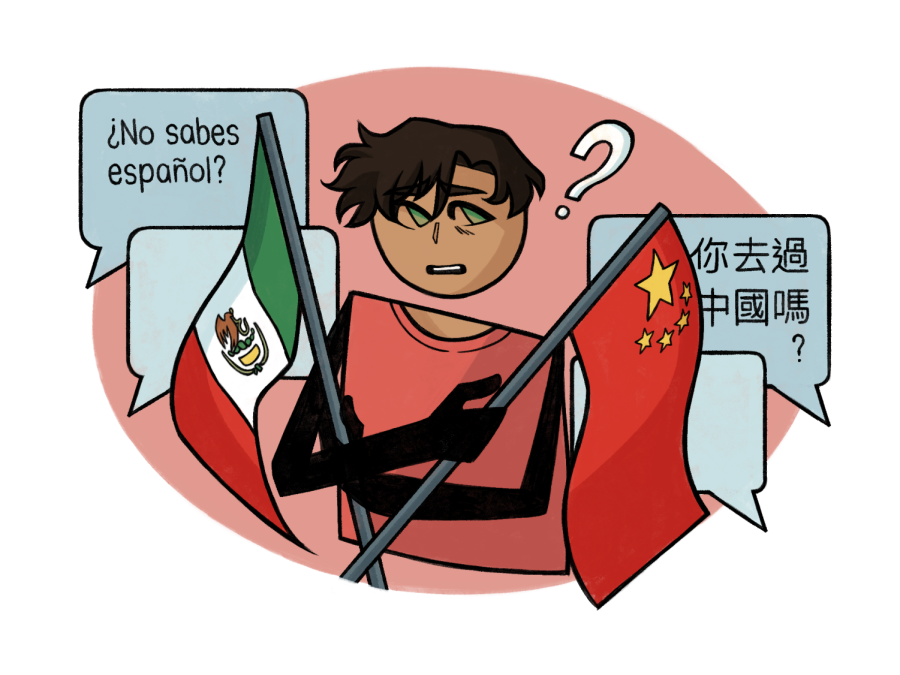FOCUS: Multiracial students feel less outcasted in the Bay Area, yet the struggle to feel ‘seen’ is strong and unrelenting
Multiracial students at SCHS appreciate the Bay Area’s diverse community.
SCHS is home to a rich and diverse community. While diversity can serve as a connective bridge for students, there is a major gray area for those of multiracial roots who feel they do not belong.
Not identifying under a singular race leads multiracial students to define their own identities. Sophomore Shelby Schuberg reflected on her experience growing up half Black and half white.
“Half of the time, people either assume you’re either one race or the other,” Schuberg said. “It’s happened before where I would say I’m half white, and people would dismiss it and tell me that I’m not. Then I would have to show a photo of my dad, who is white, to prove that I am to other people.”
In academia, Schuberg is a part of the 49ers STEM Leadership Institute and has encountered struggles being a mixed woman in the STEM field.
“There are some people who treat you differently,” Schuberg said. “I’m in the STEM program and I’m the only Black person in my cohort, so sometimes there are some offhanded comments.”
According to Pew Research Center, minority groups, under current trends, are underrepresented in the STEM workforce. Black employees account for 9 percent of all jobs in the STEM field yet represent 11 percent of all workers. Black workers are especially underrepresented in engineering, physical and life sciences, where they hold less than 6 percent of the jobs. Schuberg believes that more action should be taken to increase the racial diversity in the STEM field to inspire younger generations.
Similarly, freshman Anjali Swaminathan, who grew up half white and half Indian, has found it difficult to connect with her Indian background.
“I’m the only one that looks different from my Indian family,” Swaminathan said. “I don’t really take part in their religion or a lot of the celebrations. I also don’t speak the language that they speak, so (I) definitely feel like an outcast.”
Growing up multracial was particularly challenging for Swaminathan, who has encountered other students who have dismissed parts of her identity. She described being emotionally invalidated by her peers.
“I’ve had people tell me that because I don’t look Indian, my feelings are not valid when they say something racist,” Swaminathan said. “They say things like, ‘Oh, you’re not really allowed to feel hurt by that because you’re not really Indian.’”
Junior Nathan Hamilton, who is half Filipino and half Black, recounted his experience with his family members who live on the East Coast.
“You see a lot more Asian people than you do compared to Black people here, and my dad’s side is all the way on the East Coast,” Hamilton said. “Sometimes it’s hard to fit in with people on the East Coast since they have different manners compared to the West Coast, in that they grow up in more predominantly Black neighborhoods and around more Black people.”
According to Roberto Suro, professor of public policy at the University of Southern California, the diverse population in California has been beneficial to the development of a future with equality. Suro described California’s diversity as, “multiple umbilical cords that are connecting California to these other nations in a very energetic, very positive way, personally, commercially and culturally.”
Junior Adam Fukuda, with a multiracial background of being white, Hawaiian, Japanese and Chinese, agrees that the accumulation of numerous cultures has shaped a smooth experience.
“I think that especially in this area, there’s a lot of diversity of Asian culture, Black culture, and white,” Fukuda said. “When I visit my family, it’s clear they’re two very different groups of people, but I wouldn’t find it particularly difficult to fit in with either of them. We are able to enjoy each other’s company and talk with each other on both sides of the family.”
Despite the diverse population of the Bay Area, Swaminathan believes that the multracial experience should be portrayed in mainstream media more in order to make mixed individuals feel seen.
“People don’t really talk about the experience as much as they should, and I definitely hope for more representation of multiracial experiences in the media,” Swaminathan said. “It would make me feel more included and relate to a lot of people more. When there is diversity in the media, it’s usually not multicultural or biracial, it would just typically be one ethnicity.”
According to a study conducted by the National Research Group, 67 percent of Americans feel there is a greater need for representation of mixed race individuals. Similarly, 87 percent of participants reported an interest in on-screen content featuring mixed-race characters or families. Swaminathan suggests media content should be more inclusive to allow a younger multiracial audience a space to connect.
Hamilton is thankful for an upbringing where a variety of cultures could live in harmony simultaneously.
“I like experiencing two different cultures, but oftentimes, it’s hard to balance which culture is more prominent in my life. It’s easy to lose one side of yourself if you don’t embrace each side equally,” Hamilton said. “I’ve never experienced racism growing up in the Bay Area, and if anything, being mixed makes me feel as if I belong more because of the diversity here.”


